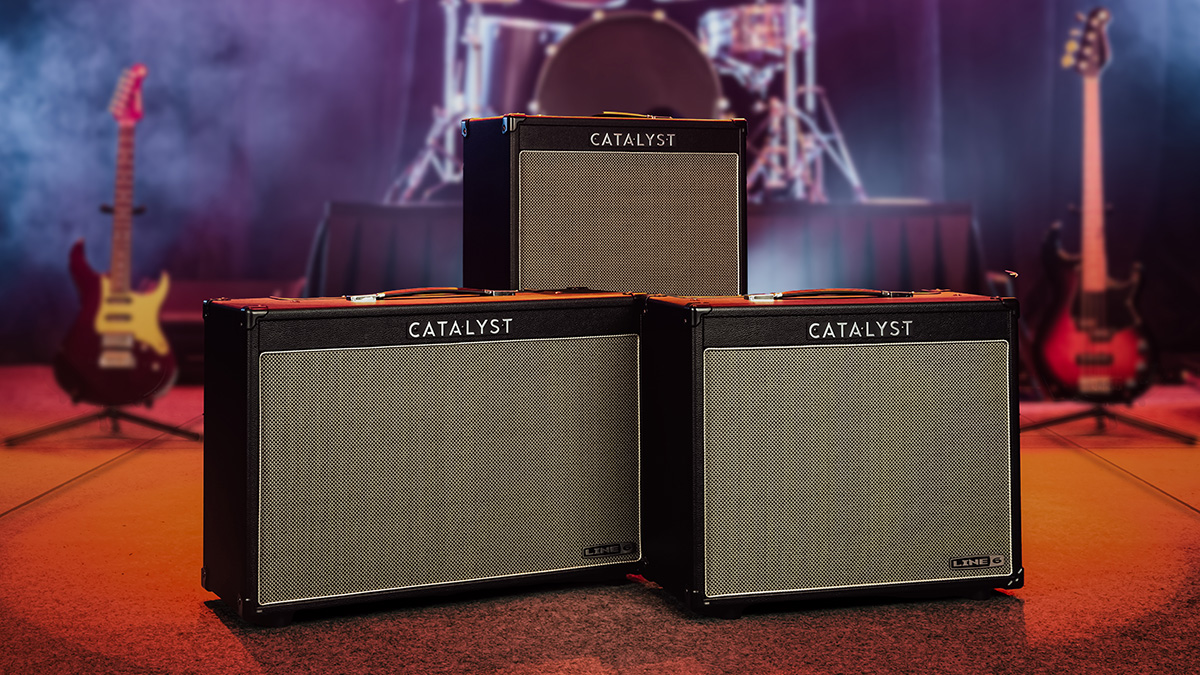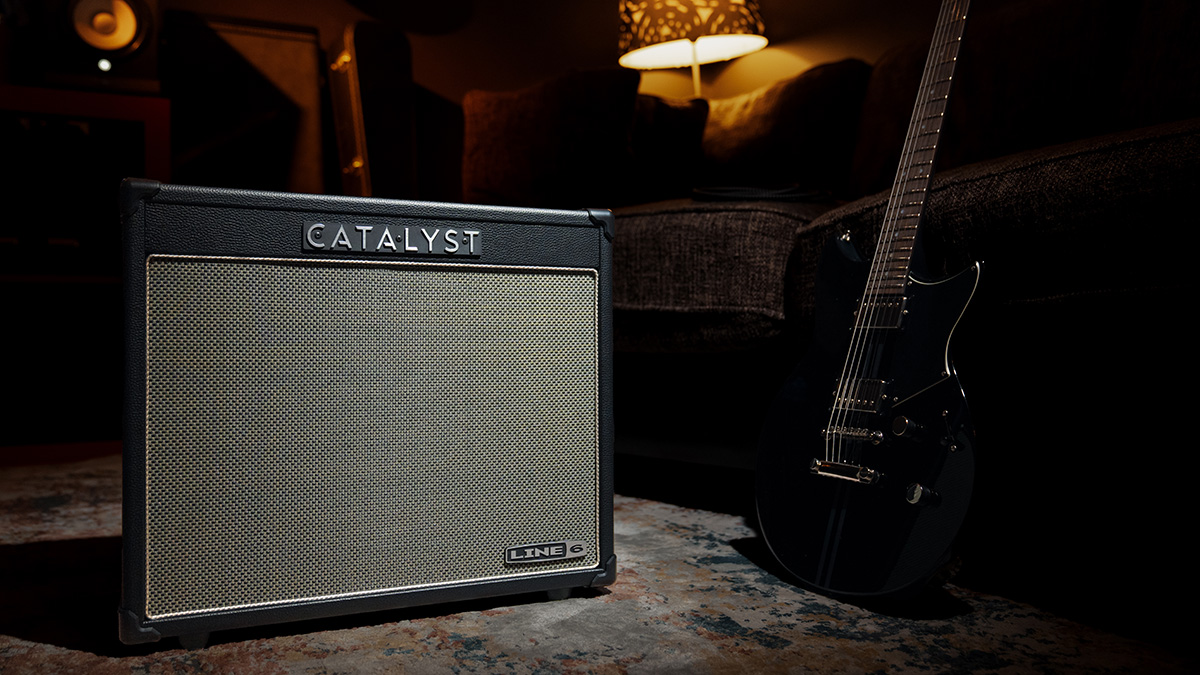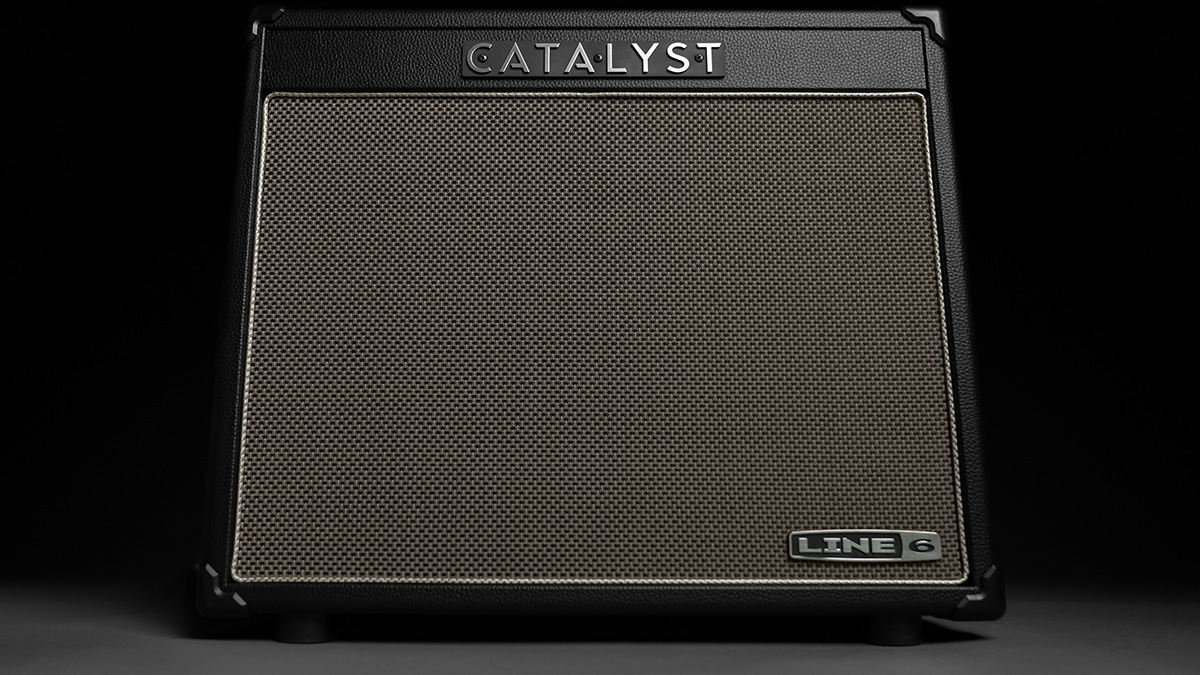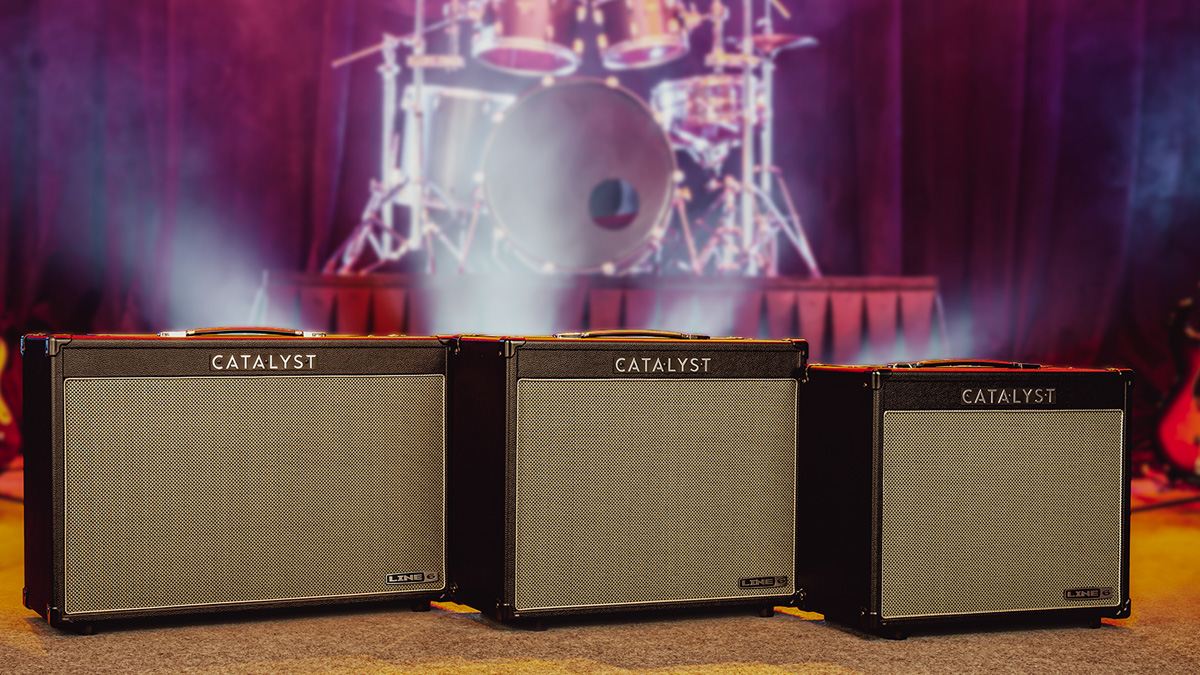
Line 6 has unveiled the Catalyst CX, a three-strong series of digital guitar amps that takes the concept of its predecessor and doubles the number of amp voicings from six to 12, and utilises the power of the brand’s ground-breaking Helix technology to offer 24 onboard guitar effects – plus equipping it with a host of features that make this a natural competitor to the Boss Katana series.
From a certain remove, the Catalyst CX will look familiar, and no, we’re not talking about the design, which retains the austere aesthetic of its predecessors, kitting out in black vinyl, with a subtly contrasting grille cloth.
No, the Line 6 Catalyst CX will look familiar because, despite its abundance of 21st-century appointments it looks and sounds like a traditional guitar amp. The idea is that you could take a tube amp die-hard, present them with one of the three amps – they all have an identical complement of controls – and they would be able to dial in a sound.
That was much of the charm behind the original Catalyst amps. You didn’t have to be down with the digital transformation of electric guitar tone to find tones in them.

Only this time we have more options, with the big headline spec item being the doubling of the core amp voicings, 12 amp voicings designed from Line 6’s flagship Helix modelling technology, each of which has its own custom boost.
There are six broad categories of amp voicing: Clean, Boutique, Chime, Crunch, Dynamic and Hi Gain. Each has a pair of amplifiers under each category, and they cover all the main guitar tone food groups, from high-headroom cleans that work gangbusters with pedals, through edge-of-breakup tube amp dirt, all the way to the sort of tight hyper-saturated metal guitar tones you might want want to play your 7-string guitar through.


As before, these are selected via rotary dial. The Boost dial then applies a custom-voiced boost circuit to the voicing, in some cases augmenting the gain stage of the amplifier or its EQ response, while others apply a Helix-modelled boost pedal.
For example, as demonstrated in the overview video, the Ventoux amp mode (one of the Dynamic voicings) has a boost that adds a Helix-modelled KWB distortion pedal to the front-end of the amp, giving you a nice bit of grit to work with, while the Archetype Clean mode adds a Minotaur overdrive pedal – which looks – and sounds – very much in the K-style of drive boxes.
Once you have got your core amp sound dialled in you can start applying effects, and there are six delays, six modulation effects, six pitch and filter effects, and six reverbs to choose from – each of which can be placed pre or post preamp. Once you’ve selected them, you’ve got two slots to place them.
It might sound a little confusing to be talking about these amplifiers as being dual-channel designs but it makes sense when you look at the control panel. The channel select buttons on the upper left-hand side of the control panel allow you to choose a channel and dial in your sound, or you can use the Manual control for a more simple WYSIWYG operation.
There are knobs for Gain, Bass, Middle, Treble, Presence, and Channel Volume. There is a master volume to control the overall output from the amp.
Other features include a tap tempo/tuner button. The Catalyst CX amps have an effects loop, and XLR output for sending your signal to the desk or DAW, and there is a power amp input for adding external devices to your rig and using the amp effectively as a powered speaker. There is also a footswitch input and an 1/8” aux input, and power scaling is available via dial on the back panel of the amp.
The 200-watt 2x12 Catalyst CX 200 and 100-watt CX 100 have MIDI inputs, but there is a USB input too. You can perform edits on all of the amps via the accompanying desktop and mobile app.
Street prices are all very approachable – these are all budget guitar amps under $500. And they are priced as follows: the CX 200 is £/$499; the CX 100 is £379/$399; and the CX 60 is £285/$299. The Catalyst CX series amps are are available to pre-order now. See Line 6 for more details.







